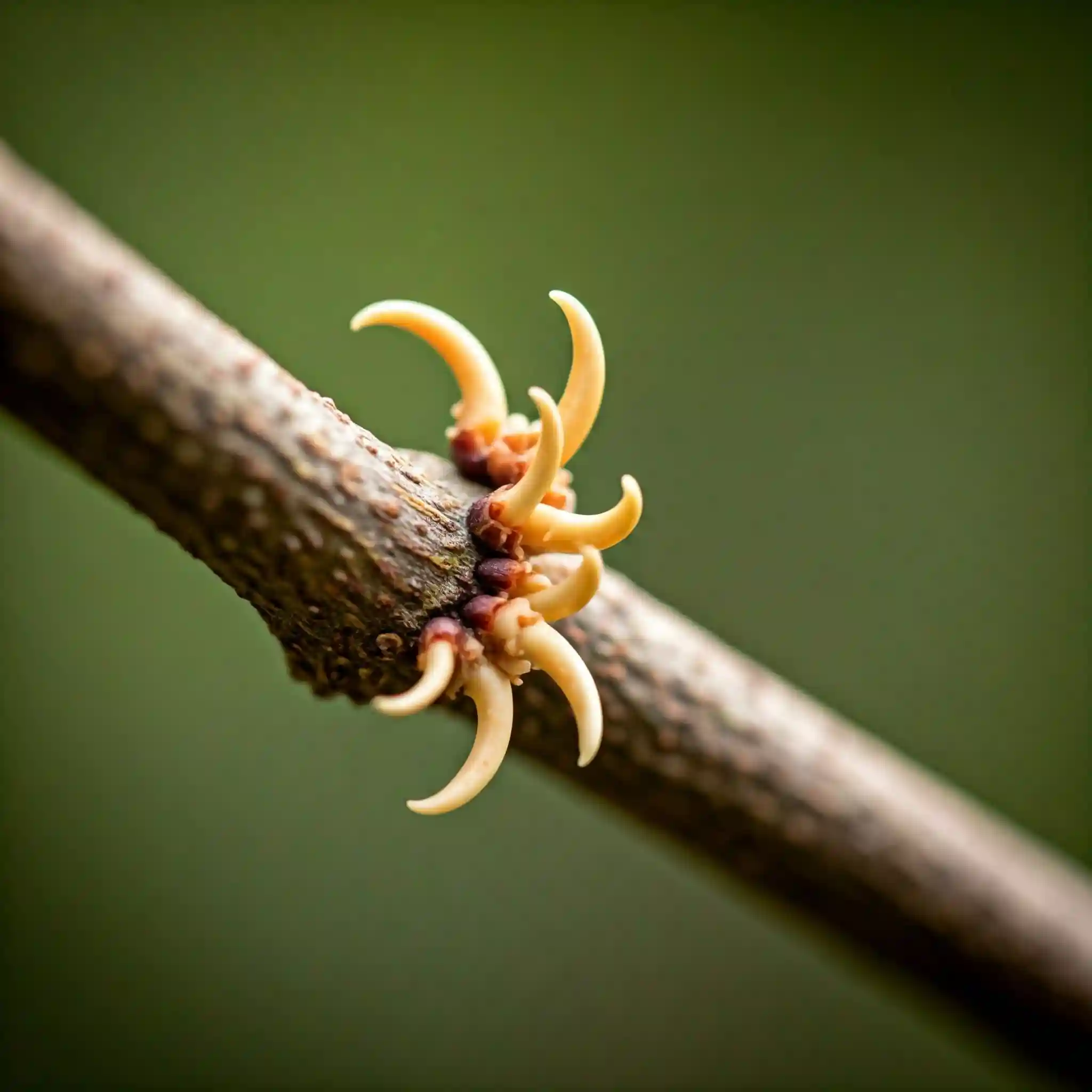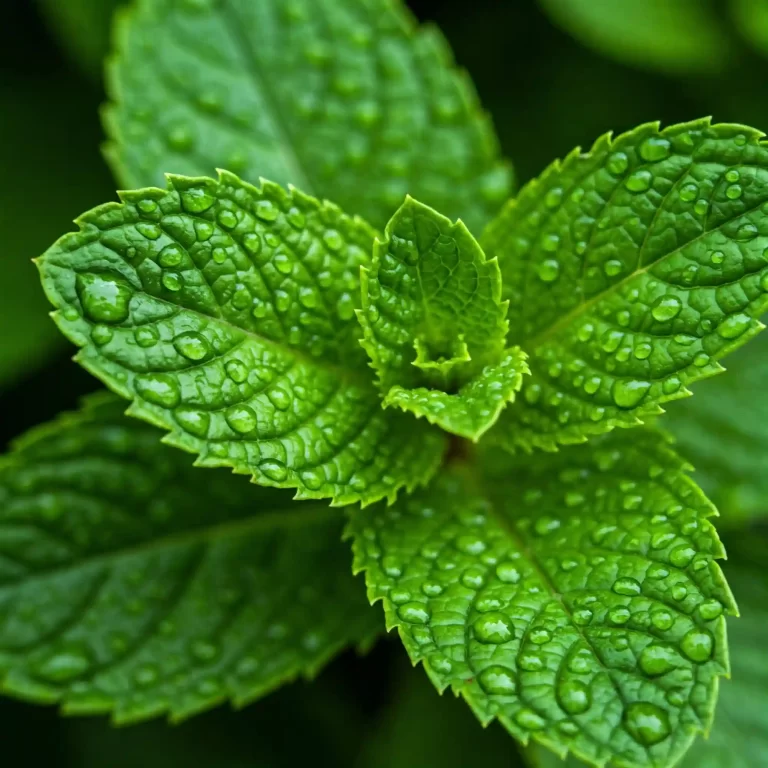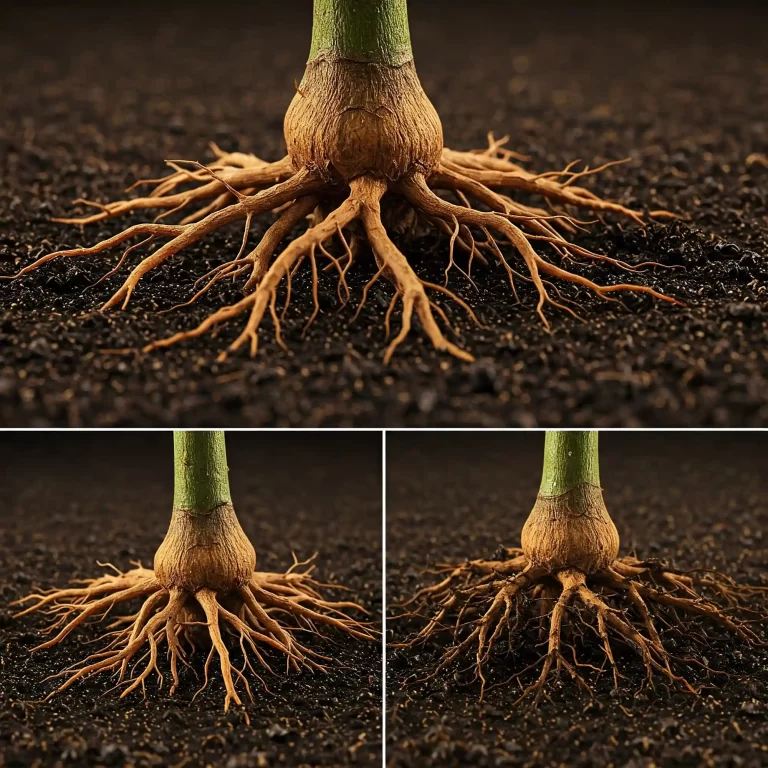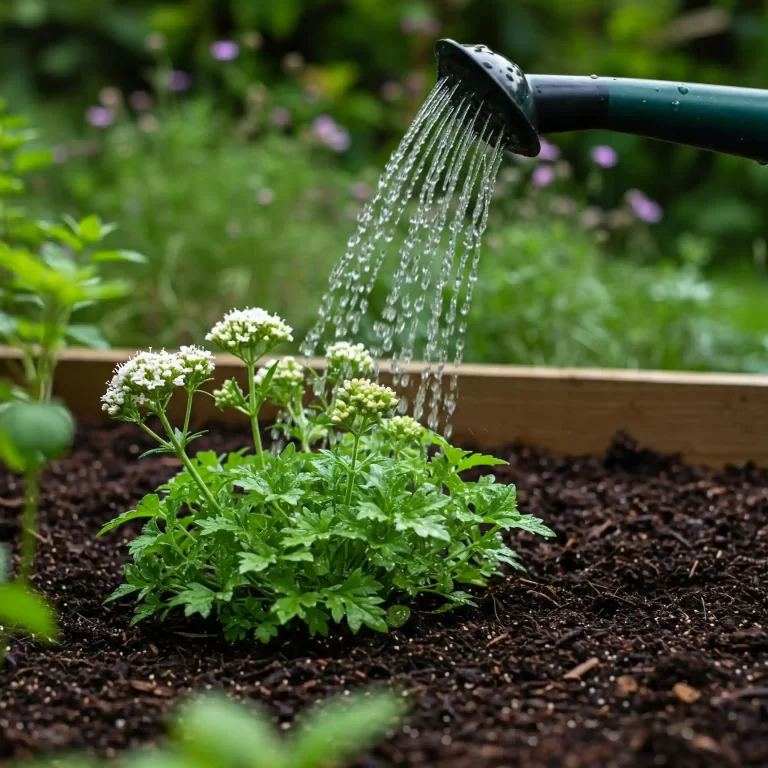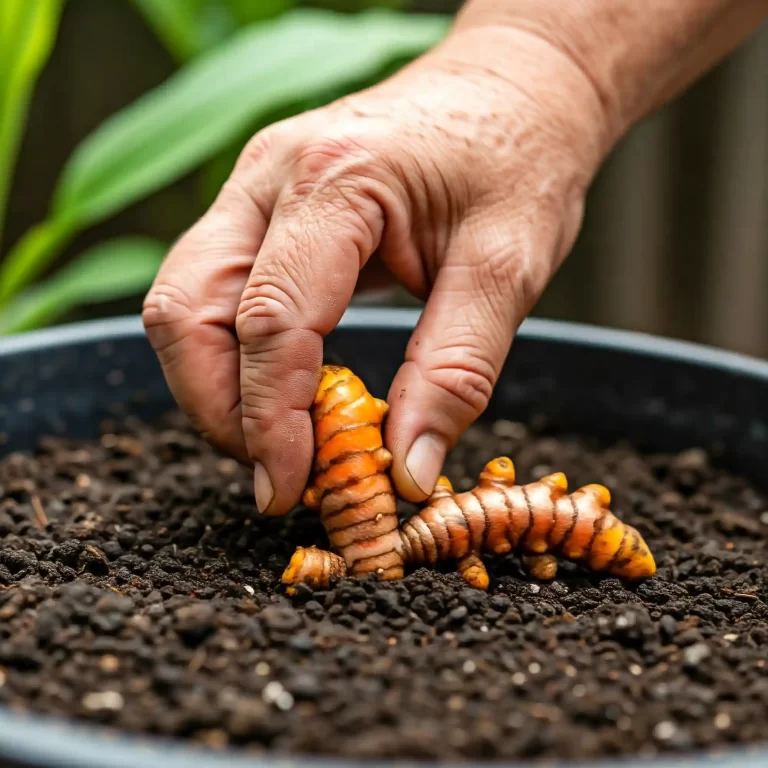Are you intrigued by the potential health benefits of natural remedies? Do you find yourself drawn to the idea of cultivating your own medicinal plants? Many people are becoming increasingly interested in exploring natural ways to support their well-being, and growing your own herbs can be a fulfilling and empowering experience. However, navigating the world of herbal cultivation can sometimes feel overwhelming, especially when dealing with unique plants like Cat’s Claw. You might be wondering where to start, what conditions are necessary, and how to ensure your plant thrives. I understand this feeling completely. I’ve been there myself, fumbling through guides and feeling lost in the details. That’s why I’ve created this comprehensive guide on how to grow Cat’s Claw herbs. I’ll take you through each step, from propagation to harvest, ensuring you have the knowledge and confidence to successfully cultivate this powerful herb in your own home. Learning how to grow Cat’s Claw herbs can be a rewarding experience for any gardener interested in cultivating medicinal plants.
Understanding Cat’s Claw: A Profile of This Unique Vine
Let’s begin by getting to know the plant a little better. Cat’s Claw, scientifically known as Uncaria tomentosa and Uncaria guianensis, belongs to the Rubiaceae family, a large family of flowering plants that also includes coffee and gardenia. It’s a fascinating woody vine native to the Amazon rainforest and other tropical regions of South and Central America. When I first encountered Cat’s Claw, I was struck by its distinctive features. The name “Cat’s Claw” comes from the small, curved, thorn-like hooks that grow at the base of the leaves, resembling a cat’s claws. These hooks enable the vine to climb and cling to trees, often reaching impressive lengths in its natural habitat. It’s a true climber, using these specialized tendrils to ascend towards the canopy in search of sunlight.
These plants are not just visually interesting; they also have a rich history of traditional use. Indigenous communities in the Amazon have used Cat’s Claw for centuries in traditional medicine. The bark and roots are the primary parts used for their purported medicinal properties. You might have heard about its use for immune support, joint health, and anti-inflammatory effects. While I’m not providing medical advice here, it’s important to acknowledge the rich ethnobotanical history associated with this plant and the reason why many people are now interested in how to grow Cat’s Claw herbs themselves.
Now, let’s delve deeper into the botanical aspects. Uncaria tomentosa and Uncaria guianensis are the two main species commonly referred to as Cat’s Claw. While they share many similarities, there are subtle differences in their chemical composition. Both species contain a range of bioactive compounds, including alkaloids, oxindole alkaloids, and quinovic acid glycosides, which are believed to contribute to their potential therapeutic effects.
Here’s a breakdown of some key botanical characteristics:
Botanical Characteristics of Cat’s Claw
| Characteristic | Description |
| Scientific Name | Uncaria tomentosa, Uncaria guianensis |
| Family | Rubiaceae |
| Growth Habit | Woody vine, climber |
| Native Habitat | Amazon rainforest, tropical regions of South and Central America |
| Distinctive Features | Hooked thorns resembling cat’s claws |
| Parts Used | Bark (inner bark), roots |
| Traditional Uses | Traditional medicine by indigenous Amazonian communities for various purposes |
Understanding these botanical details is crucial when you are learning how to grow Cat’s Claw herbs. It helps you anticipate the plant’s needs and create a suitable growing environment. For instance, knowing that it’s a rainforest native tells me that it appreciates humidity and partial shade.
How to Propagate Cat’s Claw: Starting Your Own Plants
Now that you have a good understanding of what Cat’s Claw is, you’re probably eager to learn how to grow Cat’s Claw herbs yourself. The most common and reliable method for propagating Cat’s Claw is through cuttings. While it is possible to grow Cat’s Claw from seed, it can be a more challenging and time-consuming process. In my experience, cuttings offer a higher success rate and allow you to cultivate plants that are genetically identical to the parent plant, preserving desirable traits. Let me walk you through the process of how to propagate Cat’s Claw from cuttings:
- Best time to take cuttings: The ideal time to take cuttings is during the spring or early summer when the plant is actively growing. This is when the stems are most likely to root successfully.
- Selecting healthy stems: Choose healthy, vigorous stems that are about 4-6 inches long. Avoid stems that are too young or too old, as they are less likely to root.
- Preparing the cuttings: Remove the lower leaves from the stem, leaving only a few leaves at the top. This will help to reduce moisture loss and encourage root growth.
- Rooting hormone (optional): While not strictly necessary, dipping the cut end of the stem in rooting hormone can help to speed up the rooting process.
- Rooting medium and conditions: Insert the cuttings into a well-draining rooting medium, such as a mixture of perlite and vermiculite or a good quality potting mix. Keep the medium moist but not soggy.
- Planting rooted cuttings: Once the cuttings have developed a good root system, they can be transplanted into individual pots or directly into the ground.
Growing Cat’s Claw from seed is a less common method, but it is still possible. If you choose to go this route, here are a few things to keep in mind:
- Sourcing viable seeds: Cat’s Claw seeds can be difficult to find. You may need to source them from a specialized seed supplier.
- Seed starting methods: Cat’s Claw seeds may benefit from scarification (nicking the seed coat) or stratification (cold treatment) to improve germination rates.
- Germination conditions: Sow the seeds in a well-draining seed starting mix and keep them moist and warm. Germination can take several weeks or even months.
- Transplanting seedlings: Once the seedlings are large enough to handle, they can be transplanted into individual pots.
How to Plant Cat’s Claw: Choosing the Right Environment
Now that you have your Cat’s Claw seedlings or cuttings ready, it’s time to create the perfect environment for them to thrive. As a plant native to the Amazon rainforest, Cat’s Claw has specific preferences when it comes to light, soil, and climate. I’ve learned through my own experience that replicating these natural conditions as closely as possible is key to successful cultivation. Let’s explore the ideal growing conditions for Cat’s Claw:
- Light requirements: In its natural habitat, Cat’s Claw grows under the canopy of the rainforest, receiving filtered sunlight. Therefore, it prefers partial shade to dappled sunlight. Avoid placing it in direct sunlight, which can scorch the leaves.
- Soil type: Cat’s Claw thrives in well-draining soil that is rich in organic matter. This type of soil provides the necessary nutrients and allows for proper aeration of the roots.
- Climate: Cat’s Claw prefers a warm, humid environment, similar to its native tropical habitat. It is important to consider your local climate and hardiness zone when growing Cat’s Claw.
When it comes to planting Cat’s Claw, you have two main options: planting in containers or directly in the ground. Each method has its own advantages and considerations:
- Planting in containers: This is a good option if you live in a colder climate or have limited garden space. Choose a pot that is large enough to accommodate the plant’s root system and make sure it has drainage holes to prevent waterlogging.
- Planting in the ground: If you live in a suitable climate, you can plant Cat’s Claw directly in the ground. Choose a location that provides partial shade and well-draining soil.
Regardless of whether you choose to plant in containers or in the ground, there are a few important steps to follow:
- Spacing requirements: When planting multiple Cat’s Claw plants, make sure to space them adequately to allow for their growth and spread.
- Proper planting depth: Plant the seedlings or cuttings at the same depth they were growing in their previous container.
How to Care for Cat’s Claw: Nurturing Your Vine
Once your Cat’s Claw is planted in the right environment, providing proper care is essential for its healthy growth and development. From my years of experience with cultivating various vines, I’ve learned that consistent attention to watering, fertilizing, pruning, and pest control is key. Let’s explore the specific care requirements for Cat’s Claw:
- Watering: Cat’s Claw prefers consistently moist soil, but it’s crucial to avoid overwatering, which can lead to root rot. I recommend watering deeply when the top inch of soil feels dry to the touch.
- Fertilizing: To provide essential nutrients, I use a balanced organic fertilizer or compost. Apply it during the growing season (spring and summer) to encourage healthy growth.
- Pruning and training: As a climbing vine, Cat’s Claw benefits from having a support structure to grow on. You can use a trellis, fence, or even a sturdy tree. Regular pruning helps to maintain its shape and size.
- Pest and disease management: While Cat’s Claw is relatively pest and disease-resistant, it’s still important to monitor your plant for any signs of trouble. If you notice any pests or diseases, take action promptly using organic pest control methods.
How to Harvest Cat’s Claw: When and How to Collect the Bark
Now that you’ve nurtured your Cat’s Claw vine and it’s reached maturity, you might be wondering how to harvest its valuable bark. This is an important step, and it’s crucial to do it sustainably to ensure the plant’s continued health and growth. From my experience, I’ve learned that patience and respect for the plant are key when it comes to harvesting. Here are some guidelines to follow:
- When to harvest: Cat’s Claw vines are typically ready for harvest after several years of growth, usually around 3-5 years. The bark should be thick enough to peel off easily.
- Sustainable harvesting practices: To avoid harming the plant, it’s important to harvest only a portion of the bark at a time. I recommend taking bark from different parts of the vine and never completely stripping a single stem.
- Drying and storing the harvested bark: Once you’ve harvested the bark, you’ll need to dry it properly to prevent mold and preserve its quality. You can do this by spreading it out on a clean surface in a well-ventilated area.
Troubleshooting Common Cat’s Claw Growing Problems
Even with the best care, you might encounter some challenges while growing Cat’s Claw. From my experience, I’ve found that being proactive and addressing issues early on can make a big difference in the health and vitality of your vine. Let’s explore some common problems and their solutions:
- Root rot: This is a common issue with Cat’s Claw, especially if the soil is not well-draining or if the plant is overwatered. To prevent root rot, make sure to plant your Cat’s Claw in well-draining soil and avoid overwatering.
- Pest infestations: Cat’s Claw can be susceptible to pests like aphids and spider mites. If you notice any pests, take action promptly using organic pest control methods.
- Slow growth or lack of flowering/bark development: Several factors can contribute to slow growth or a lack of flowering or bark development, including insufficient light, poor soil quality, or inadequate nutrients. To address this, make sure your Cat’s Claw is getting enough light, fertilize it regularly, and consider using a root stimulator.
Frequently Asked Questions About Growing Cat’s Claw
Throughout my years of gardening and sharing my knowledge, I’ve come across some recurring questions about growing Cat’s Claw. I believe addressing these FAQs will further assist you in your cultivation journey. Here are some of the most common questions I receive:
Growing Cat’s Claw from cuttings indoors is a great option if you live in a colder climate or don’t have a suitable outdoor space. To do this, you’ll need to take cuttings from a healthy Cat’s Claw vine and root them in water or a well-draining potting mix. Once the cuttings have developed roots, you can transplant them into individual pots and place them in a sunny location.
Cat’s Claw prefers a well-draining soil that is rich in organic matter. A good option is to use a mix of equal parts perlite, vermiculite, and compost. This will provide the necessary drainage and nutrients for your Cat’s Claw vine.
To grow Cat’s Claw organically, you can use organic fertilizers and pest control methods. To prevent root rot, make sure to plant your Cat’s Claw in well-draining soil and avoid overwatering.
If you live in a cold climate, you can still grow Cat’s Claw by planting it in a pot and bringing it indoors during the winter months. You can also try growing it in a greenhouse or other protected location.
As a climbing vine, Cat’s Claw benefits from having a support structure to grow on. You can use a trellis, fence, or even a sturdy tree. To train your Cat’s Claw vine, simply tie it to the support structure using soft twine or fabric.
Conclusion: Embracing the Journey of Growing Cat’s Claw
Growing Cat’s Claw is a journey that requires patience, dedication, and a love for nurturing plants. It’s a journey that I’ve personally found incredibly rewarding, and I encourage you to embark on it as well.
By following the tips and techniques I’ve shared in this guide, you’ll be well on your way to successfully cultivating your own Cat’s Claw vine. Remember to provide the right environment, care for your plant diligently, and harvest sustainably.
As your Cat’s Claw grows, you’ll not only gain a beautiful addition to your garden but also a deeper understanding of this unique and valuable herb. And who knows, you might even inspire others to start their own Cat’s Claw growing journeys.
